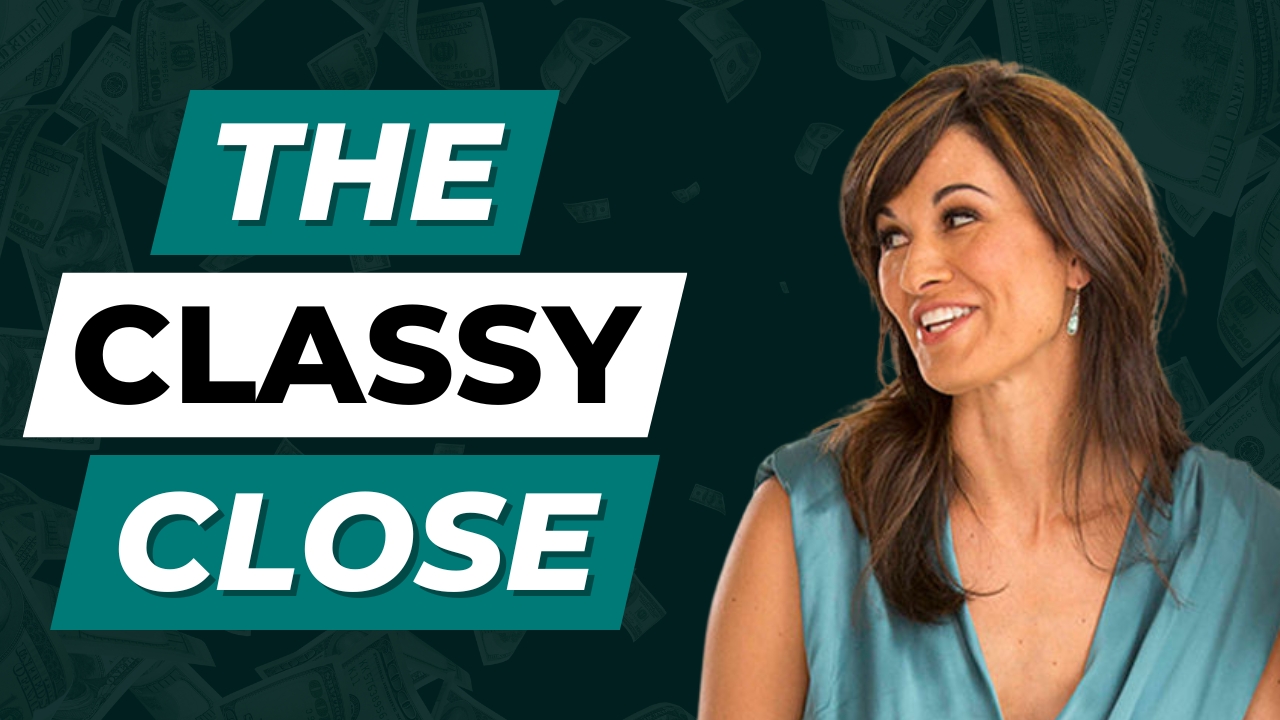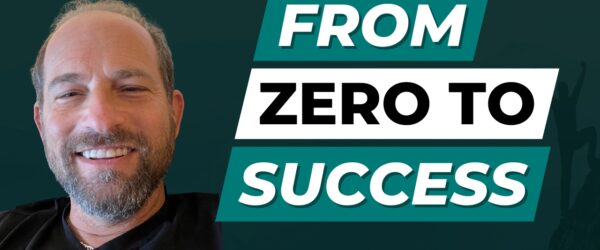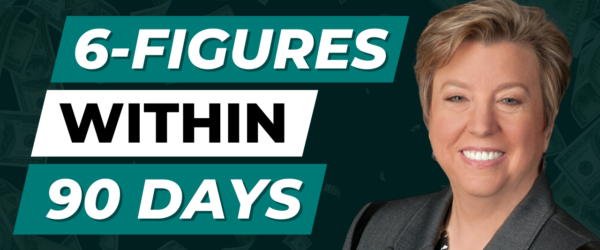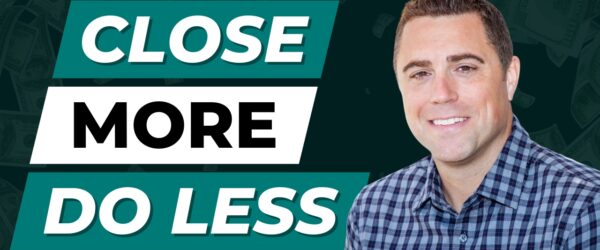In this article, we will be recapping the insights from a recent Happy Hour with Vanessa Horn, a remarkable entrepreneur who defied the odds and transformed her life from poverty to prosperity. With a strong emphasis on education, personal growth, and mentorship, Vanessa has not only built multiple successful companies but also dedicated herself to helping others attain financial freedom, flexible schedules, and meaningful work.
In this Happy Hour Hangout, Vanessa shares invaluable wisdom on the art of selling, starting with identifying and enhancing your unique selling style. Say goodbye to the discomfort of pushy sales tactics and hello to a more effective and genuine approach. Prepare to uncork the secrets behind the "Champagne Close" that dissolves sales resistance and allows high-ticket clients to close themselves. Additionally, discover the powerful "10x3" framework, empowering you to overcome objections and confidently navigate the sales process. Are you ready to refine your client selection and foster relationships with those who align with your business values? Vanessa has you covered. Get ready for an enriching journey into the classy close, where understanding your prospects leads to closing more deals with finesse and integrity.
Classy Close Framework
Vanessa delves into her acclaimed "Classy Close" framework, a guide to mastering the art of selling high-ticket packages. Vanessa opens up about her own agency's approach, emphasizing that they only work with clients valued at a quarter of a million dollars or more. Her sales team handles packages ranging from a minimum of $8,000 to an impressive $100,000. She acknowledges that different industries may have varying definitions of what constitutes a high-ticket item, but within her agency realm, these price ranges signify significant value. Whether it's a comprehensive VIP day experience or ongoing retainer models, Vanessa's framework encompasses a wide range of transactions, all of which will be explored throughout the Happy Hour.
Discover Your Sales Style Through Your Internal Resistance
Vanessa states that first, you must identify and understand your own internal resistance when it comes to sales. She demonstrates with a whiteboard example, quadrants of connection and credibility. Vanessa candidly shares her initial reluctance towards sales, recounting advice she received in college to pursue a career in sales due to its transferability and resilience in any industry.
She goes over various perceptions of the kind of salesperson people don't want to be, like "pushy," "strong-armed," and "sleazy." Vanessa labels this undesirable category in the lower-left quadrant as the "hardcore closer," characterized by a transactional approach that prioritizes closing at all costs, rather than genuinely addressing the prospect's needs. Moving on, she highlights two other less extreme but still suboptimal categories: the "BFF" approach in the bottom-right quadrant, where a strong connection is formed but credibility may be compromised, and the "expert" category in the upper-left quadrant, where credibility is high but connection may be lacking. Vanessa emphasizes the importance of finding balance. She then introduces the concept of the "velvet rope," in the upper-right quadrant, where ideal clients are carefully selected through qualifiers and auditions, ensuring they meet certain criteria before an offer is made.
Ultimately, she reveals the ideal sales style—the "advocate" which is just a little corner of the Velvet Rope quadrant—characterized by high connection and high credibility. In this approach, sellers relax, act as advocates for their clients, and employ the classy champagne close, allowing prospects to close themselves by offering solutions that align perfectly with their needs and goals.
Using The Buyers Pocket to Overcome Objections
Vanessa introduces the concept of the "buyer's pocket" and its significance in overcoming objections even before a sales call takes place. She explains that prospects go through psychological stages before reaching the buyer's pocket, which represents an ideal state where they are ready to commit to working with you. The first stage is problem awareness, where Vanessa asks participants to type in the chat the specific problems they solve with their services. The responses vary from recruitment and reputation to obtaining more clients and product knowledge.
The next stage is solution awareness, where prospects become aware of how they can solve their problems. Vanessa shares an example of a client who specializes in a particular real estate investment strategy called "bur" and highlights the importance of ensuring that prospects are sold on that specific solution before the sales process begins.
The third stage is prospect awareness, where prospects need to be aware of the unique qualities and expertise of the service provider. Vanessa emphasizes the need to differentiate oneself from generic solutions and demonstrate the value and effectiveness of the specific method being offered. By addressing these stages and pre-selling prospects, sellers can avoid becoming a commodity and increase their chances of successful sales interactions.
Iceberg Model: Avoid Commoditization And Be Timing Aware
Vanessa introduces the concept of the Iceberg Model to emphasize the importance of avoiding commoditization in the market. She explains that merely stating the problem your business solves, such as helping clients replace their corporate income, can lead to commoditization and decisions based solely on product and price. To stand out, Vanessa advises sellers to focus on marketing the solution and their unique methodology. She encourages them to name their method and add a little trademark to make it compelling. By doing so, sellers delve deeper into the underlying needs of their prospects, moving away from commoditization.
Vanessa highlights that the final stage of the buyer's pocket is timing awareness. Sellers must ensure that the prospect understands the urgency and relevance of addressing their problem now. Vanessa suggests using screening questions to filter for prospects who have a genuine sense of urgency. If the prospect indicates that they are not ready or the timing is not urgent, Vanessa recommends not investing a full 45-minute conversation with them. The goal is to pre-sell prospects, ensuring that they are genuinely interested and ready before engaging in further discussions.
Prime Prospects For The Call And Create Desire For Your Method
Vanessa emphasizes the importance of priming prospects for the sales call by ensuring they are sold on your unique approach and methodology. She advises sellers to differentiate themselves by highlighting what sets them apart, whether it's a named method or a client story attached to their approach. By doing so, sellers create an emotional connection with prospects and reinforce the reasons why the prospect reached out and booked a call in the first place. Vanessa encourages sellers to weave their story and method throughout the communication, including reminder emails and texts leading up to the call, to maintain the prospect's connection and desire to work with them.
Vanessa highlights the significance of screening and gauging the readiness level of prospects, as this impacts their engagement and likelihood of closing the deal. She explains that when these essential steps are missed, objections tend to arise during the call, leading to confusion and potential wasted time. Vanessa concludes by reiterating that prospects must be properly primed and sold on the problem, solution, unique method, and timing in order to be in the buyer's pocket and ready to say yes to working with the seller.
How to Identify a 5-Star Prospect & Best Position and Sell Yourself
Vanessa puts Joe in the hot-seat and they discuss the process of identifying a 5-star prospect, specifically focusing on Joe's niche of serving charter school networks. Joe explains that his agency helps charter schools create awareness and increase enrollment through public relations (PR) and marketing strategies. They discuss the unique aspects of Joe's method, such as providing a white glove approach and emphasizing long-term results. Vanessa suggests that Joe highlight the benefits of his agency's bilingual capabilities and their ability to provide comprehensive services, including training and logistics for media interactions.
Vanessa advises Joe to create a distinction between his agency and competitors by showcasing the exceptional results they deliver. She suggests framing their approach as an "elevate method," not only increasing awareness but also elevating schools to a prestigious status within their market. Joe realizes that they haven't effectively communicated the tangible aspects of their services and agrees to incorporate elements like an echo effect, where the school's message echoes throughout the community, and the omni-presence method, amplifying their presence across social media platforms.
They also discuss the importance of juxtaposing their services against alternatives that potential clients may consider. By highlighting the weaknesses of in-house efforts or other PR agencies, Joe can demonstrate the unique value his agency brings. They conclude by outlining the qualities of an ideal client, including being open, responsive, committed, and valuing excellence. Joe realizes that aligning his agency with these qualities and effectively communicating their alignment will make them stand out from other PR firms.
By following this approach, Joe can confidently communicate the benefits and distinct advantages of working with his agency, thereby attracting 5-star prospects who align with their values and vision.
10x3 Framework for Overcoming Objections
Vanessa introduces her 10x3 Framework for overcoming objections, which involves addressing the top 10 objections and providing the top three ways to overcome them. She emphasizes the use of models, frameworks, and stories to dissolve objections during the sales process. Vanessa shares an example of a pizza model she developed for one of her clients in the course creation industry. This model highlights the importance of offering a comprehensive solution rather than just a small piece of the puzzle. She encourages sellers to create visual models and frameworks that clearly differentiate their approach.
Vanessa also discusses the power of client success stories in overcoming objections. She shares a story about Sandra, a photographer who successfully launched a course targeting a niche market. By sharing this story, Vanessa demonstrates how objections related to niche markets and technical capabilities can be addressed effectively. She concludes by emphasizing the value of identifying client objections and leveraging compelling stories, whether from clients or one's own experience, to overcome them during the sales process.
Rebuttal Objections: Tennis Ball Analogy
Vanessa uses a tennis ball analogy to explain how to handle objections effectively. She encourages sellers to avoid immediately countering objections like a game of tennis where they hit the ball back right away. Instead, she advises them to collect all the objections, or tennis balls, by actively listening to the prospect's concerns and asking for additional objections. By doing so, sellers can uncover the real underlying objection, which is often fear-based.
Vanessa highlights that the prospect's fear may stem from doubts about achieving desired results or thinking they may be the exception to success. She suggests addressing the root cause of the objection and reframing the prospect's perspective by emphasizing a high success rate or a risk-free guarantee. By collecting all the objections and understanding the true concerns, sellers can effectively address them and build trust with the prospect.
Identity Your Top Objections & Learn How to Change Your Prospects Perspective
Vanessa emphasizes the importance of identifying the top objections that prospects may have and addressing them effectively. She encourages sellers to write down the most common objections they encounter and be prepared to handle them in their sales funnel. Vanessa highlights objections such as "I need to think about it," "I can't afford it," and "How do I know I'll get the promised results?" She suggests changing the decision-making criteria or prospects' perspective by comparing the certainty they would have trying to achieve the result on their own versus following a proven system.
Vanessa also advises sellers to focus on the client journey and paint a vision of the steps and results they can expect. By reframing the conversation from listing features to showcasing the step-by-step process and quick wins, sellers can help prospects understand the value and commitment involved.
Additionally, Vanessa introduces the concept of a love it or leave it approach instead of a money-back guarantee to address concerns about long-term commitment. Understanding the underlying beliefs and concerns behind objections is key to effectively addressing them and building trust with prospects.
Resistance Dissolver: How to Overcome Objections Before the Call
Vanessa introduces a resource called the "sales resistance dissolver" and shares strategies for overcoming objections before the sales call. She discusses addressing objections like "Let me think about it" and "I need to speak with my spouse or partner" by setting expectations and providing information upfront.
Vanessa explains that during a triage call, detailed discussions about the program and creating a game plan help prospects make an informed decision. On the thank-you page of the booking, a video explains the call process and success criteria. Vanessa emphasizes the importance of timing, model, and investment, stating that the program is suitable for those ready to take action immediately. She also ensures that all decision-makers are present by asking for their attendance on the booking form and conducting an initial screening call. Vanessa advises rescheduling if the partner is not available. By addressing objections before the call and involving all decision-makers, Vanessa sets the stage for a productive and informed conversation.
She encourages the audience to identify objections, understand the underlying beliefs, and determine where in the sales process they can address and overcome those objections. Vanessa emphasizes the importance of having stories or frameworks ready to counter objections and change the prospect's perspective. She compares it to the visual illusion of the old lady and the young lady, showing a different way of perceiving things. Vanessa also highlights the value of permission-based selling, where she asks if prospects are open to considering a different perspective. By actively addressing objections and offering alternative viewpoints, sales professionals can effectively dissolve resistance and increase their chances of closing deals.
Conclusion
In Vanessa's Classy Close session, she shared valuable insights and strategies for overcoming objections in sales conversations. The key takeaways from her session include the importance of identifying and understanding objections, addressing underlying beliefs, and proactively overcoming objections through stories or frameworks.
Vanessa emphasized the need to have a clear sales process that addresses objections at various stages and the power of changing perspectives to dissolve resistance. Additionally, she highlighted the value of permission-based selling and being open to different viewpoints. By implementing these techniques, sales professionals can navigate objections with confidence, build trust with prospects, and increase their chances of closing deals successfully. With Vanessa's guidance, the GoMobile Community gained practical tools to overcome objections and enhance their sales effectiveness.





